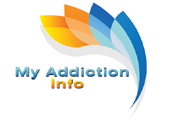Opioids are a class of drugs that are used in prescription medications for the treatment of pain that’s acute or chronic. Along with prescription opioids, there is also an illegal drug– heroin— which falls into this category.
How Do Opioids Work?

Opioids are central nervous system depressants. When someone uses opioids, whether prescription pain medications or heroin, the substance crosses the blood-brain barrier. Then, the substance converts to morphine and binds to opioid receptor sites.
Opioid receptors are located throughout the body, and opioid drugs especially affect the receptors in the brain and throughout the central nervous system.
When someone uses prescription or illegal opioids, the substance changes how pain signals are sent. Opioids also alter the emotional response someone has to pain, which is how they’re different from other pain medicines.
In doing so, opioids can cause dopamine and other feel-good brain neurotransmitters to be released into the system of the user. This is what’s known as a high. Since opioids do create a high and have psychoactive properties, they have an abuse and addiction potential.
Prescription Opioids
Some of the most commonly prescribed and also recreationally abused opioids include:
- Hydrocodone (Vicodin)
- Oxycodone (OxyContin, Percocet)
- Oxymorphone (Opana)
- Morphine
- Codeine
- Fentanyl

When someone takes prescription opioids, they should only take them for the length they’re instructed to, and they should follow their medical provider’s instructions carefully. The longer someone uses opioids, or if they abuse them in any way other than what’s prescribed, they’re at a greater risk of becoming addicted to them.
Symptoms of prescription opioid abuse include taking these drugs without a prescription, taking higher doses than prescribed, or continuing to take the drugs when they’re no longer needed for pain.
Since opioids are central nervous system depressants, some of the side effects can include:
- Drowsiness
- Confusion
- Constipation
- Nausea
- Slow breathing
Over time, if someone continuously abuses opioids they are at a greater risk of health complications. For example, long-term opioid abuse can cause brain and respiratory damage and can alter the functionality of hormonal systems.
Prescription Opioids and Heroin Use
There are potential links between prescription opioids and heroin. These drugs create a high that’s similar to one another, and the general effects of prescription opioids are nearly the same as heroin.
If someone becomes addicted to prescription opioids, they might ultimately end up using heroin. Heroin is cheaper and easier to get than most prescription pain medications.
What Is Heroin?

Since the conversation surrounding prescription opioids often also includes a reference to heroin, what is this dangerous and often deadly substance? Heroin is a naturally-derived opioid made from morphine. Heroin can come in powder form, or as a sticky, black tar-like substance. Heroin can be used in different ways including by sniffing, snorting or smoking it. It’s most commonly injected, however. This increases the risk of secondary side effects such as infections.
Overdosing On Opioids
Whether it’s prescription opioids or heroin, opioid overdoses are a significant problem in the United States right now. The problem with opioids and overdoses related to their use is so significant it’s often referred to as a public health emergency or an epidemic.
When someone uses opioids, as was touched on, they slow the functions controlled by the central nervous system. The central nervous system controls breathing, heart rate and blood pressure.
If someone uses a dose of opioids, whether prescription drugs or heroin, that’s more than their central nervous system can tolerate, their breathing and heart rate may slow down to a dangerous level. This can end up leading to someone being in a coma or experiencing brain damage. Death is also possible as a result of opioid overdoses.
Opioids Statistics

In 2015, it was estimated that two million Americans aged 12 or older had a substance use disorder involving prescription pain medications.
In the same year, 591,000 Americans were estimated to have a substance use disorder involving heroin, and those numbers are likely higher now.
It’s estimated that 23 percent of people who use heroin develop an addiction to opioids.
In the U.S., drug overdose is the leading cause of accidental death. in 2015, there were more than 20,100 overdose deaths related to prescription pain medications, and 12,990 related to heroin.
Empower yourself and learn more about opioids including the signs and symptoms of opioid abuse, facts and statistics and how to find treatment for opioid addiction and dependence.

